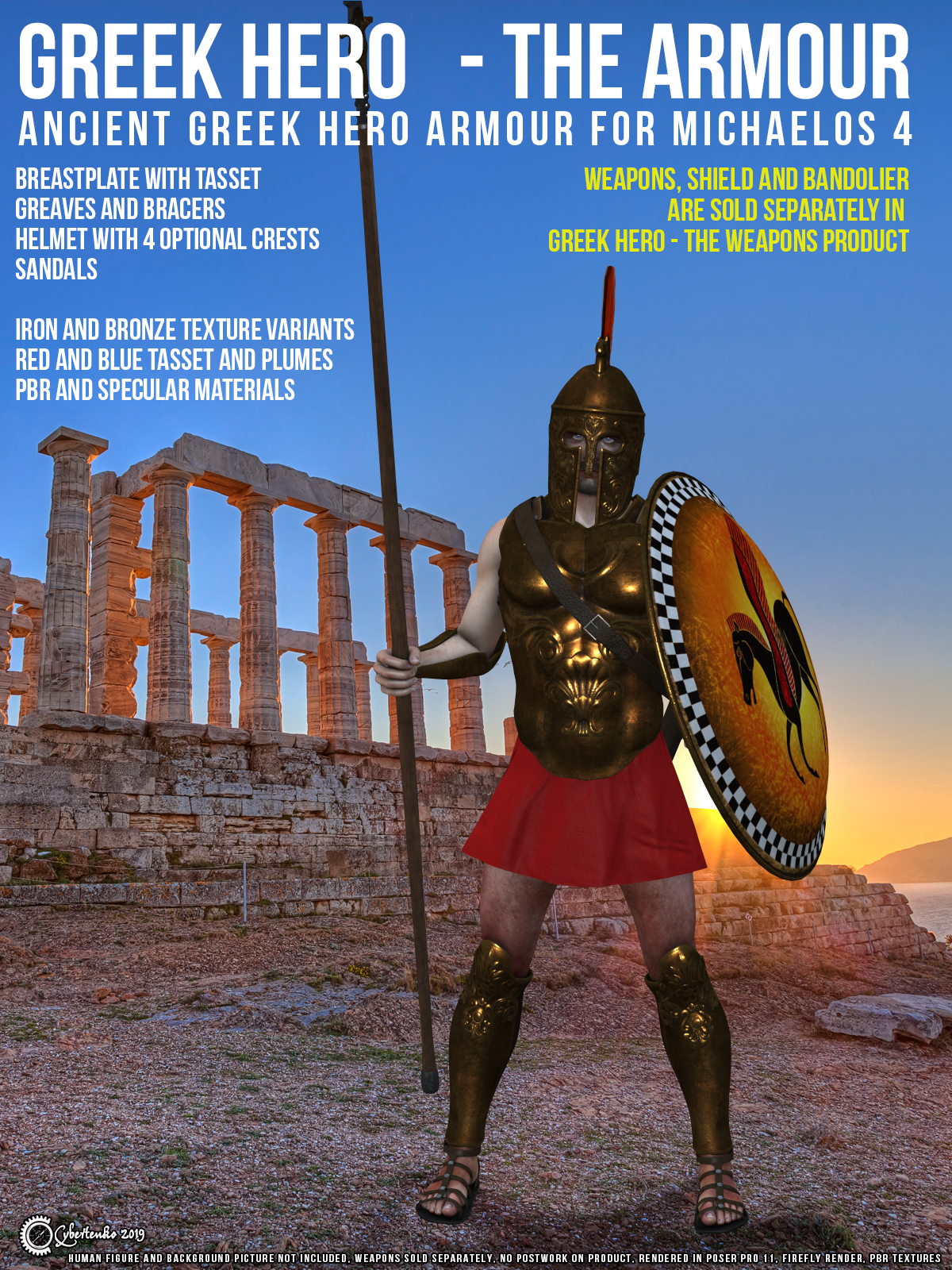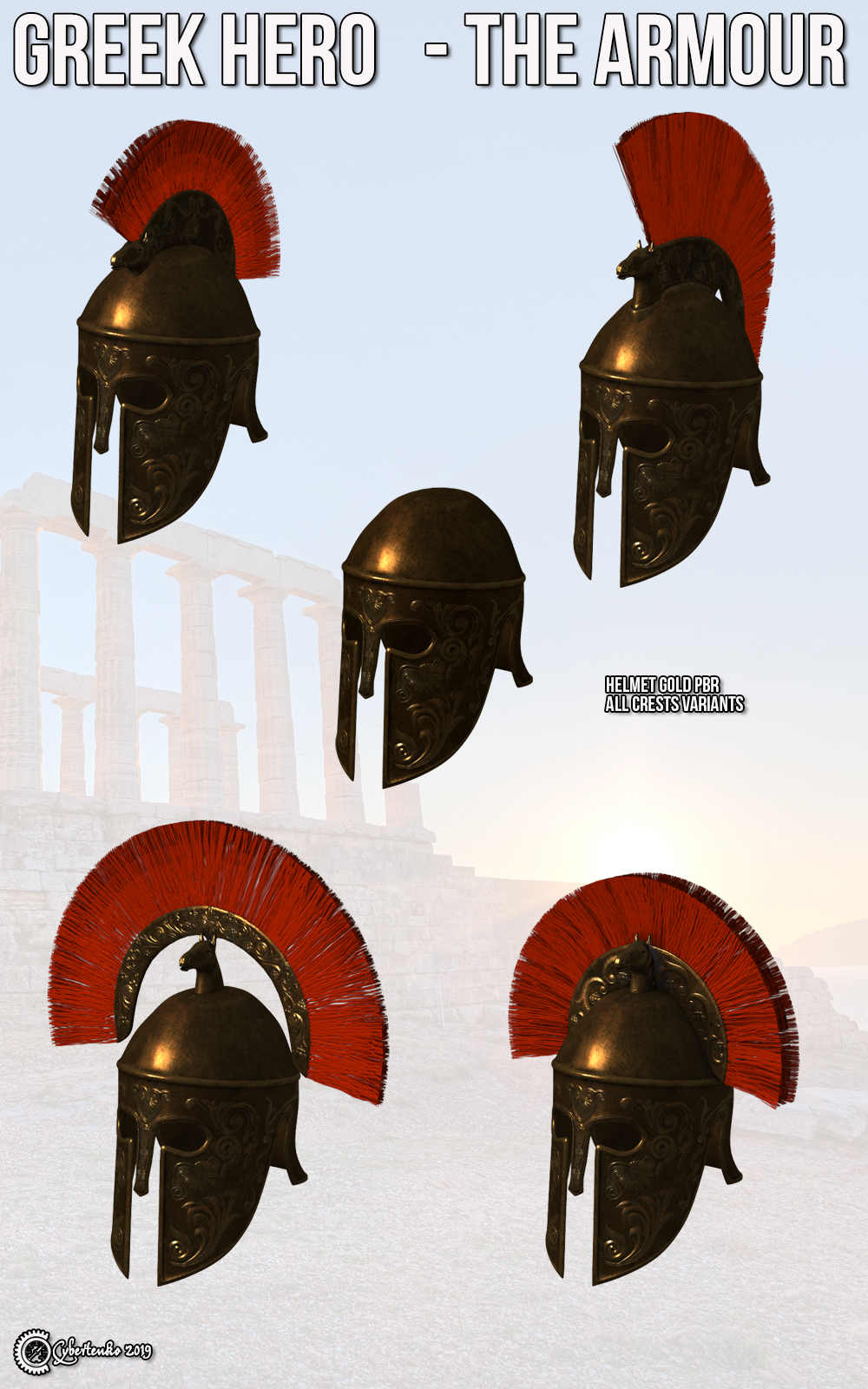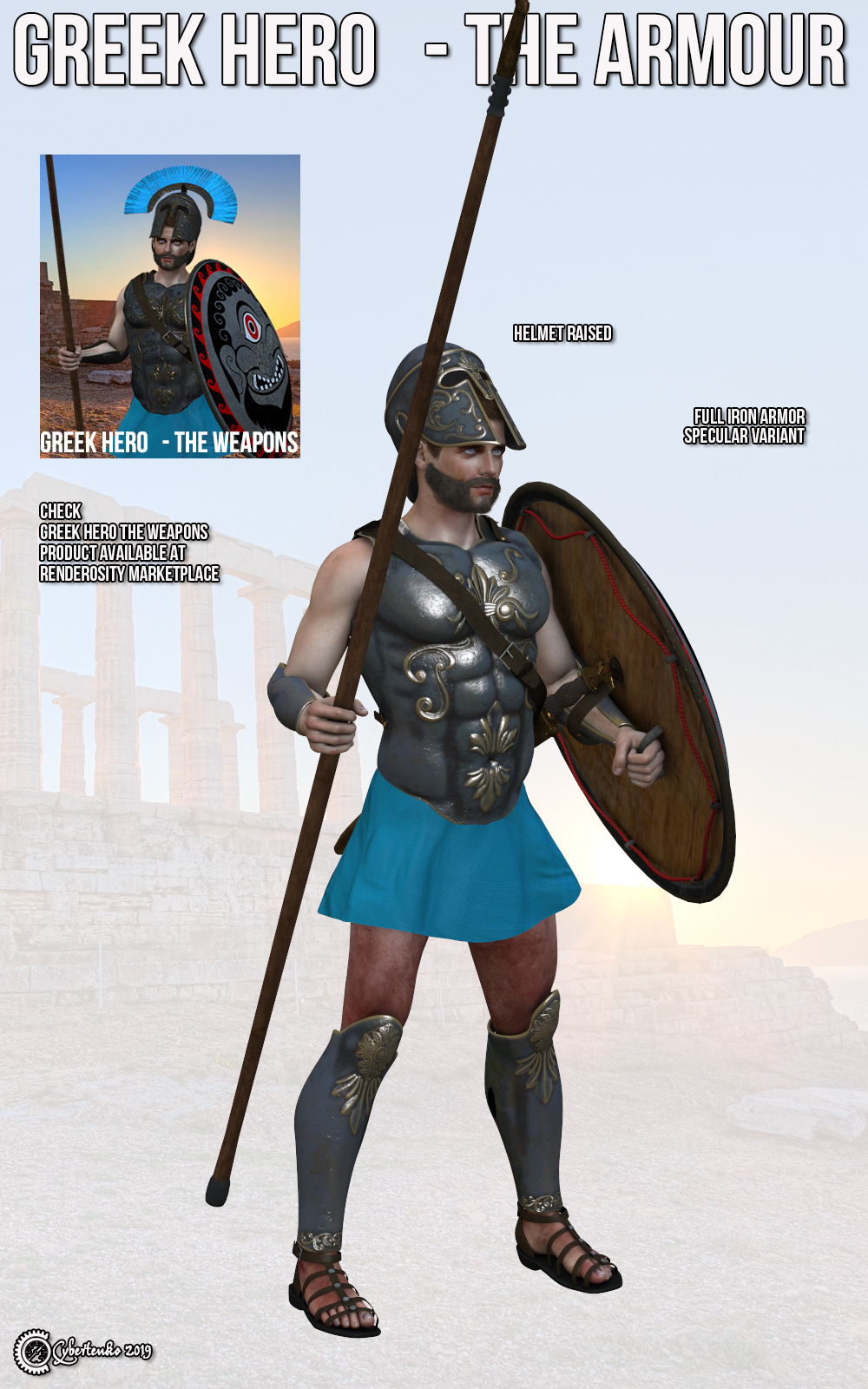Greek Hero - The Armour by Cybertenko











Software:
Base Figures:
Michael 4
Available Uses:
Soldiers of ancient Greek city-states were primarily armed with spears and shields. Hoplite soldiers utilized the phalanx formation in order to be effective in war with fewer soldiers. The formation discouraged the soldiers from acting alone, for this would compromise the formation and minimize its strengths. The hoplites were primarily represented by free citizens—propertied farmers and artisans—who were able to afford the bronze armour suit and weapons (estimated at a third to a half of its able-bodied adult male population). Hoplites were not professional soldiers and often lacked sufficient military training. The richer upper-class hoplites typically had a bronze cuirass of either the bell or muscled variety, a bronze helmet with cheekplates, as well as greaves and other armour. The design of the helmets used varied through time. The Corinthian helmet was at first standardized and was a very successful design. Our model represent typical hoplite armor - muscled breastplate with tasset, greaves, bracers and corinthian helmet with several interchangable crests.
What is included:
Poser Conformer Figures:
Armour with cloth tasset
Bracers L+R
Greaves L+R
Helmet (4 interchangeble crests)
Sandals
Material options
Gold and Iron variants for all armor pieces (PBR and Specular options)
Red and Blue variants for helmet plumes and tasset
Up to 4kx4k and textures suitable for closeups, Unpacked Runtime Size: 130 MB.
suitable for animations. Historical Reconstruction.










